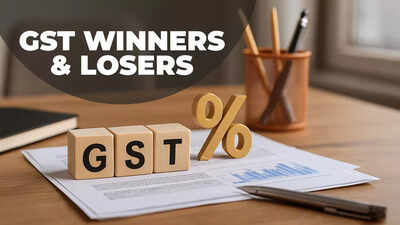The GST Council, chaired by Union finance minister Nirmala Sitharaman, has approved a significant restructuring of the indirect tax system on Wednesday, introducing a simplified two-rate framework of 5% and 18%, with a 40% category reserved for select luxury and sin goods.The revised rates will be implemented from September 22, coinciding with the start of Navratras and the traditional start of the festive shopping season, except for tobacco product taxation.
This comprehensive reform, initiated by the Centre, eliminates the 12% and 28% slabs, aiming to streamline tax administration and resolve classification conflicts. All Indian breads will now be GST-free, and individual life health insurance policies will receive tax exemption. Additionally, various essential medicines will become tax-exempt.The compensation cess will cease with the new rate implementation. However, current tobacco product rates will remain until outstanding loans and interests are settled.Also Read | GST rate cuts from September 22! All you need to know about new tax rates for items – 75 FAQs answeredAutomobile prices will reduce, with small cars attracting 18% tax instead of 29% (28% tax plus 1% cess), whilst larger vehicles, including SUVs, will incur 40% GST rather than 50% (28% tax plus 22% cess). The 5% rate for electric vehicles continues unchanged.Essential food items like paneer, ghee and namkeen will now attract 5% or zero tax, whilst daily consumer products including hair oil, shampoos and toothbrushes move to the 5% category. All white goods, from refrigerators to ACs, dishwashers and TV sets, along with cement, will now attract 18% instead of 28%.
Big winners of GST rate cuts
- Diabetic foods, jams, pasta, cheese – from 12% to 5%
- Other sugars, including chemically pure lactose, maltose, glucose and fructose, in solid form; sugar syrups; artificial honey; caramel – 18% to 5%
- Cocoa butter, fat and oil, Cocoa powder, not containing added sugar or sweetening matter – 18% to 5%
- Malt extract, food preparations of flour, groats, meal, starch or malt extract – 18% to 5%
- Corn flakes, bulgar wheat, prepared foods obtained from cereal flakes, FRK – 18% to 5%
- Pastry, cakes, biscuits & other bakers’ wares – 18% to 5%
- Extracts, essences and concentrates of coffee, extracts, essences and concentrates of tea or mate – 18% to 5%
- Soups and broths and preparations therefor, Ice cream & other edible ice – 18% to 5%
- Waters, including natural or artificial mineral waters & aerated waters – 18% to 5%
- Plant-based milk drinks, ready for direct consumption – 18% to 5%
- Talcum powder, Face powder, Tooth brushes including dental-plate brushes – 18% to 5%
- Tableware, kitchenware, baby napkins and diapers – 12% to 5%
- All goods – artificial filament yarns – 18% to 5%
- Synthetic or artificial filament tow – 18% to 5%
- Synthetic or artificial staple fibres – 18% to 5%
- Waste of manmade fibres – 18% to 5%
- Sulphuric acid, Nitric acid, Ammonia, Rear tractor tyres and rear tractor tyre tubes, Tyre for tractors, Tube for tractor tyres – 18% to 5%
- Agricultural diesel engine of cylinder capacity exceeding 250cc for Tractor – 18% to 5%
- Agricultural machinery for soil preparation, Harvesting or threshing machinery – 12% to 5%
- Thermometer, Instruments and apparatus for medical, surgical, dental or veterinary uses for physical or chemical analysis – 18% to 5%
- Dish washing machines, Monitors, projectors – 28% to 18%
- Automobile manufacturers like Maruti, Toyota, alongside consumer electronics companies such as LG Electronics and Sony stand to gain immediate advantages when these revised rates become effective.
- For luxury vehicles, the GST council decreased the effective rate to 40% from up to 50%, making vehicles from Mercedes-Benz, AUDI Aktiengesellschaft and BMW more accessible. Electric vehicles maintained their 5% GST rate, benefiting manufacturers like Tata Motors and Mahindra & Mahindra, despite recommendations for an increase.
Also Read | GST rate cuts bonanza! What is cheaper and dearer? Check full list of items in 0%, 5%, 18% & 40% slabs
Losers of GST rate rationalization
- Clothing and accessories priced above Rs 2,500 face an increased GST from 12% to 18%, potentially affecting international retailers like Marks and Spencer, Levi Strauss, and Zara.
- Coal taxation increased to 18% from 5%, whilst carbonated beverages produced by PepsiCo and Coca-Cola face an effective tax rate at 40%.










